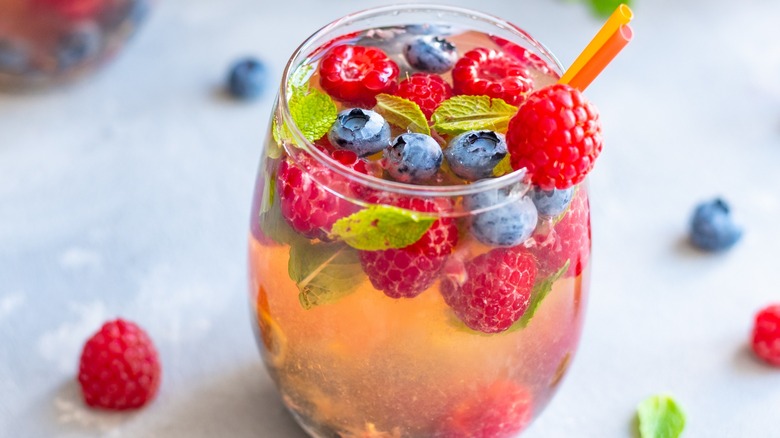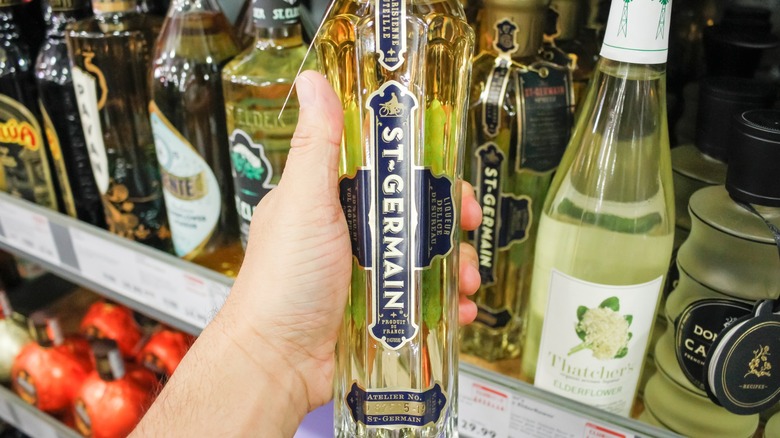This Is The Ideal Liqueur To Balance Your White Sangria
You've all likely had some great Sangria in your lifetime. You've all also probably had a few bad glasses. The truth is, there's a lot of subpar Sangria out there. One benefit of making the alcoholic drink yourself at home is that you have full control over what goes into it, and while you don't, by any means, have to splurge on the finest wine or liqueur to mix in, you can be intentional about balancing all of the flavors. All too often, Sangrias are over-sweetened and over-boozed. They're also frequently made with brandy. While nonconventional, there are a plethora of other spirits you can add to what's in your Sangria — ones that will do more to balance the flavors rather than mask them.
Adam Cass, the Sommelier at Aba Miami, let Tasting Table in on what he believes is the ideal liqueur for Sangria. "Dry Curaçao is a natural pairing for both Red and White Sangria," he explained, adding, "St-Germain can add notes of elderflower and bring a more floral expression to White Sangria." But, with whatever spirit you choose, the secret is to not go overboard. Sangria is meant to be an easy drink, and your guests aren't expecting to get slashed off of it — nevermind the impact that adding too much alcohol might have on your Sangria's flavor balance. According to Cass, a good rule is to use 1⁄2 to 1 cup of liqueur per bottle of wine in your Sangria. That will keep all of the fruity, tart flavors intact without sneaking up on your friends.
St-Germain gives your White Sangria a floral touch
Sangria is meant to be fruity and tart, but with the slightest touch of flowery notes to complement those in your wine. White wines such as Riesling, Sauvignon Blanc, and even Champagne — some of the best wines for Sangria — are known to carry floral notes of white and yellow flowers. Made from hand-picked elderflowers, the St-Germain tastes naturally fresh and fruity. The flower itself is cream in color with a subtle rosy, honeysuckle-like aroma that's carried by the fruit flavors of pear, peach, and citrus in the French liqueur. Added to your White Sangria, it does exactly as Adam Cass said it would by bringing it more floral expression — just as long as you don't add too much.
Sticking to Cass's recommended ratio, the elderflower liqueur will bring your White Sangria the floral balance it needs. However, it can also inspire even more flavors. For instance, given the peach and pear tasting notes in the liqueur, it wouldn't be a bad idea to throw some fresh peaches and pears directly into your pitcher along with it. Make sure they're ripe, as that will ensure that the flavors of the fruit actually seep into the Sangria and come through in your glass. Also, while the added fruit and St-Germain might make it sweet enough, it could also be fun to play around with other sweeteners such as honey or lavender syrup, both of which would further complement the flavors in your floral white wine Sangria.

